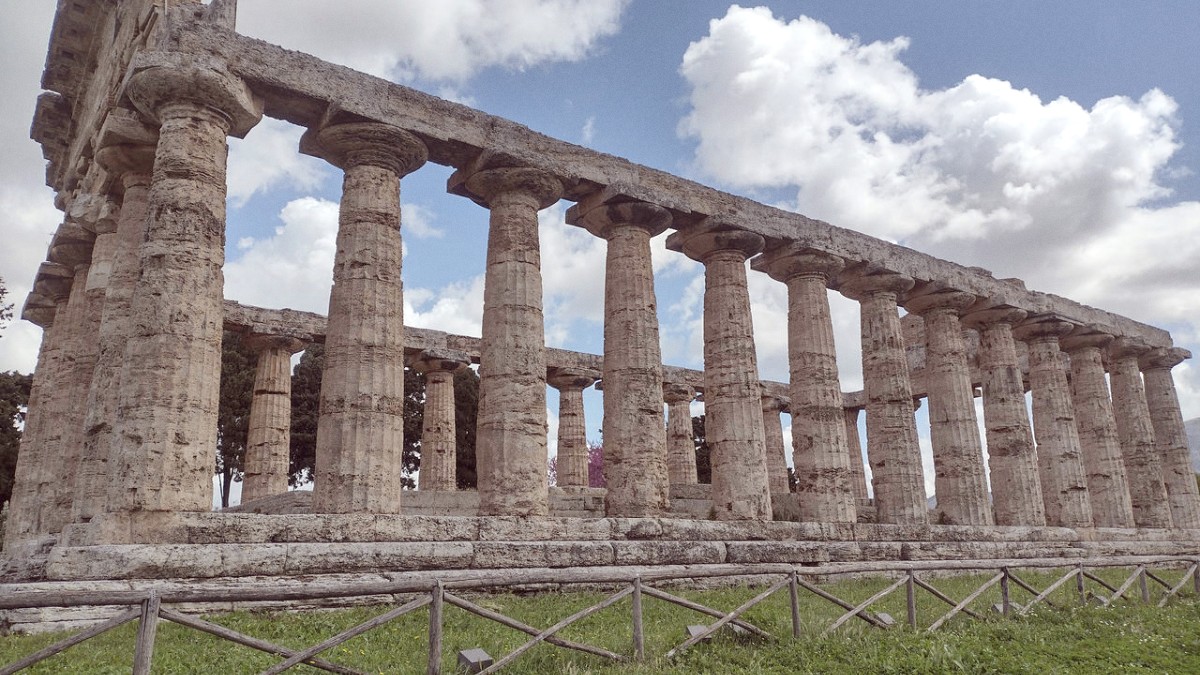
Campania, Italy
Paestum Archaeological Park and its renowned temples: Temple of Hera I (Basilica), Temple of Neptune (or Poseidon), and Temple of Athena (or Ceres).
The entire ancient city includes the Roman forum, the amphitheater, Roman house remnants, and city walls. It presents an exceptional instance of Magna Graecia's urban planning.
No "secret" viewpoints exist for the main temples, but quieter spots appear along less central paths.
No other major specialized museums exist directly in Paestum. The National Archaeological Museum is the main cultural institution here.
Formal art galleries are limited. The National Archaeological Museum occasionally hosts temporary exhibitions linked to archaeological discoveries.
Paestum does not have dedicated cultural centers. Cultural events, like classical concerts or theatrical performances, may be held within the archaeological park periodically.
Check the official Parco Archeologico di Paestum website for temporary exhibitions, educational programs, or special evening openings. "Paestum by Night" presents an illuminated temple experience.
Paestum holds rich historical sites beyond its famous temples.
The central public space of the Roman city. It served as a marketplace, meeting place, and administrative center.
A Roman amphitheater, though much of it lies under the modern road. A portion of its structure is still visible.
A small circular building used for political assemblies during the Roman period.
Remains of other Roman public buildings illustrating daily life and social structures.
Well-preserved defensive walls, approximately 5 kilometers long, encircle the ancient city.
The museum exhibits frescoes from other Lucanian tombs, offering a fascinating glimpse into their culture.
The ancient city layout, with its grid plan established by the Greeks and continued by the Romans, is a historical architectural feature. Layers of Greek, Lucanian, and Roman occupation are visible.
The three major temples are the main religious sites within the park, reflecting ancient Greek and Roman polytheistic worship. Small, early Christian churches outside the park show later settlement.
Direct industrial or military heritage specific to Paestum's ancient site is limited, beyond the impressive defensive city walls. The walls themselves represent a remarkable military engineering feat.
Paestum's location features natural beauty beyond its ruins, including coastal and park areas.
The archaeological park itself presents green spaces and olive groves within its bounds. Cilento, Vallo di Diano and Alburni National Park borders Paestum, a UNESCO Global Geopark. This park presents diverse landscapes and extensive hiking trails.
Views of the temples against the Cilento mountains or the Tyrrhenian Sea are notably scenic, especially at sunset. The interaction of ancient architecture and natural landscape creates stunning vistas.
Visits to local buffalo farms (caseifici) present a chance to see the famous Mediterranean water buffalo up close.
Long, sandy beaches stretch along the Paestum coast. They present opportunities for swimming, sunbathing, and relaxation.
Enjoy the Tyrrhenian Sea's refreshing waters.
Beyond main attractions, Paestum and its surroundings present lesser-known spots worth exploring.
Combine a visit to Paestum with these nearby historical sites for a broader regional understanding.
Explore the modern town of Capaccio Scalo for an authentic local experience, away from the tourist strip. You find local shops, markets, and cafes where daily life happens.
The broader Cilento Coast presents numerous emerging destinations for a quieter, local experience.
The Cilento Coast presents natural beauty, traditional villages, and authentic cuisine.
Explore towns like Castellabate, Acciaroli, or Palinuro for a quieter, more local experience.
These spots are gaining recognition beyond the main Amalfi Coast hotspots.